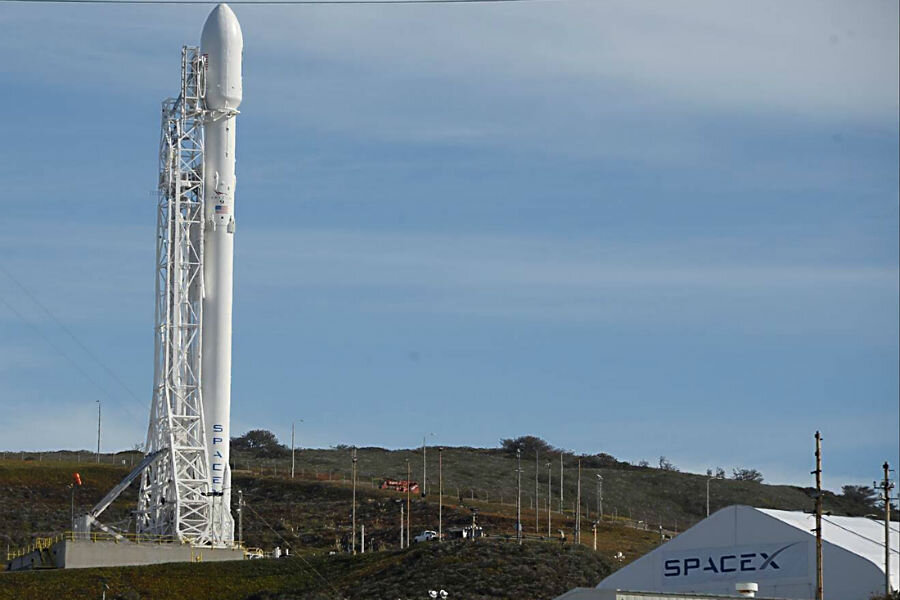SpaceX launch ocean-monitoring satellite, attempt ocean landing
Loading...
A SpaceX rocket is set to release an ocean-monitoring satellite into orbit Sunday, followed by an attempted landing of its first stage on a platform at sea.
The Falcon 9 rocket is set to launch Sunday morning from the Vandenberg Air Force Base in California, carrying the Jason-3 satellite hundreds of miles above the surface of the Earth to observe information about sea surface height.
The Jason-3 follows three previous satellites with similar missions, launched throughout the 1990s and 2000s, to provide more information about ocean patterns and track climate change. Jason-3, like its predecessors TOPEX/Poseidon, Jason-1, and OSTM/Jason-2, is a joint mission between NASA and France’s Centre National d'Etudes Spatiales (CNES). The National Oceanic and Atmospheric Administration (NOAA) and European Organisation for the Exploitation of Meteorological Satellites (EUMETSAT) are also behind the Jason-3 project.
Since the program's inception, the three satellites have been continuously providing oceanic measurements. TOPEX/Poseidon operated from 1992 to 2006, Jason-1 from 2001 to 2013, and Jason-2 is still operational. With the arrival of the newest craft, Jason-2’s orbit will be reassigned
Data from Jason-3’s radar altimeter, accurate within at least 1.3 inches, will be applied to forecast waves, currents, and storms, model coastlines, observe environmental crises, and more. In addition, the data can be used to track sea level variations and the impact of climate change.
"Jason allows us to get the big picture in terms of sea-level change in the years to come," Jason-3 program scientist Laury Miller told the Associated Press.
Jason-3 was initially scheduled to launch last summer, but the failure of a Falcon 9 rocket resulted in the mission's postponement until after a successful test launch, which occurred last month. Jason-3's mission is expected to last five years.
While the rest of the craft carries on into orbit, SpaceX will use Sunday’s launch to attempt a landing of the Falcon 9’s first stage on a barge floating off California. SpaceX successfully landed a rocket on dry land in Cape Canaveral, Fla., last month, but its previous attempts at ocean landings have failed.
The company hopes to be able to routinely reuse rockets by landing their first stages after takeoff, instead of letting them drop into the ocean, therefore cutting down future launch costs. SpaceX will typically attempt the returns on land, but is not currently cleared to complete the operation at the Vandenberg base.
The Falcon 9 rocket’s stages will separate less than three minutes after takeoff, at which point its second stage carrying the Jason-3 will continue into orbit and drop off the satellite around 56 minutes into the mission. The first stage will meanwhile attempt its landing at sea.
The total cost of Jason-3’s development and five-year mission is estimated at around $300 million, shared between the participating agencies.







